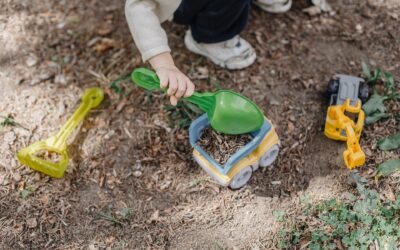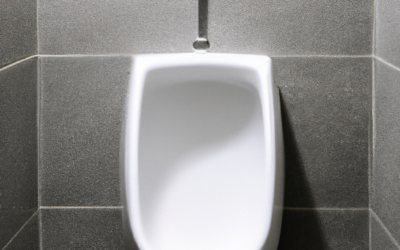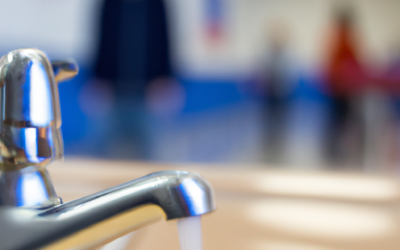100 ways to make your school be a true role model
Want to know how you and your school can make a real difference? Look no further!
Make your schools sustainable, carbon neutral & truly mission driven

Pick one & get going!
No. 98: Allow only reusable dishware at school
Using reusable dishware at schools has many benefits, including reducing waste, lowering costs, and promoting sustainability education. Research shows that switching to reusable dishware can have a significant positive impact on the environment and finances of schools, while also providing educational opportunities for students to learn about sustainability practices.
No. 74: Set up beehives in the school grounds
Setting up beehives on school grounds can have numerous benefits, including environmental, educational, and financial advantages. The presence of bees can help to support local ecosystems, provide opportunities for student learning, and even generate revenue through the sale of honey and other bee-related products.
No. 50: Use food waste digesters for fertilizer
Food waste digesters are an effective solution to reduce food waste and produce high-quality fertilizer for schools. This sustainable system not only benefits the environment by reducing greenhouse gas emissions, but it also saves schools money on waste disposal fees and can be used as a valuable educational tool.
No. 26: Install bike racks at school
Installing bike racks in schools can benefit the environment, promote physical activity, and save money. Students who bike to school have improved physical fitness and academic performance, while schools can save money on transportation costs and reduce carbon emissions.
No. 18: Use digital signage instead of paper posters
Using energy-efficient digital signage instead of paper posters in schools has environmental and financial benefits. It reduces waste and saves energy, resulting in cost savings. Experts suggest that digital signage is also more effective in communicating with students, improving engagement and participation in school activities.
No. 4: Create sustainable play areas
This article discusses the environmental and financial benefits of creating sustainable play areas in schools. These play areas reduce waste, promote a connection to nature, reduce carbon emissions, and save schools money on maintenance and utility bills. Schools can also receive grant funding for sustainability initiatives.
No. 98: Install low-VOC carpets and flooring
Carbon-negative flooring materials, such as bamboo and cork, can have environmental and financial benefits for schools. These materials have a low carbon footprint and can help reduce energy consumption and maintenance costs. Additionally, they are durable and can last longer than traditional flooring materials.
No. 50: Encourage cool clothing in hot weather & reduce AC
This article discusses the environmental and financial benefits of encouraging cool clothing in hot weather and reducing AC usage in schools. Experts recommend the use of energy-efficient fans and designing buildings with natural ventilation.
No. 52: Consider switching to geothermal heating systems
This article discusses the environmental and financial benefits of switching to geothermal heating systems in schools. Geothermal energy can provide a sustainable and cost-effective heating solution while reducing carbon emissions. It also includes data and citations from experts in the field.
No. 38: Engage with an ewaste recycling program
An e-waste recycling program can provide environmental and financial benefits to schools by properly disposing of electronic devices and using the funds for community sustainability projects or PTA. Engaging in such programs can reduce the amount of e-waste in landfills and promote a circular economy.
No. 40: Measure your school’s carbon footprint
This article explains the importance of measuring a school’s carbon footprint and the potential environmental and financial benefits that can result from it. It cites various experts and studies to provide evidence for its claims.
No. 34: Use a consolidation service to deliver your goods
The use of consolidation services to deliver goods to schools can have significant environmental and financial benefits, reducing transportation emissions and lowering costs. These services combine multiple shipments into one delivery, reducing the number of vehicles on the road and optimizing routes.
No. 74: Plant trees and create a tree canopy
This article highlights the benefits of planting trees in school and creating a tree canopy. It cites various sources to show how trees can help the environment, improve air quality, reduce energy costs, and enhance student well-being.
No. 99: Install carbon-negative flooring materials
Carbon-negative flooring materials, such as bamboo and cork, can have environmental and financial benefits for schools. These materials have a low carbon footprint and can help reduce energy consumption and maintenance costs. Additionally, they are durable and can last longer than traditional flooring materials.
No. 100: Install energy-efficient laboratory equipment
The use of biodegradable restroom supplies in schools provides environmental and financial benefits by reducing waste, lowering greenhouse gas emissions, and saving money on disposal fees. They also improve indoor air quality and promote health and safety.
No. 97: Use biodegradable restroom supplies
The use of biodegradable restroom supplies in schools provides environmental and financial benefits by reducing waste, lowering greenhouse gas emissions, and saving money on disposal fees. They also improve indoor air quality and promote health and safety.
No. 96: Use biodegradable student ID cards and lanyards
This article discusses the environmental and financial benefits of using biodegradable student ID cards and lanyards in schools. Biodegradable materials reduce waste and have a lower environmental impact. These products are also cost-effective, contributing to long-term savings for schools.
No. 95: Use energy-efficient vending machines
This article discusses the environmental and financial benefits of using energy-efficient vending machines with low-energy lighting and motion sensors in schools. The machines have been found to significantly reduce energy consumption, lower operating costs, and decrease carbon emissions.
No. 94: Use solar-powered fans for outdoor seating areas
This article discusses the environmental and financial benefits of using solar-powered fans in outdoor seating areas at schools. It includes information on energy savings, environmental impact, and the benefits of using renewable energy sources.
No. 93: Use electric-powered school cleaning robots
This article discusses the benefits of using electric-powered cleaning robots in schools, including improved indoor air quality, reduced energy consumption, and cost savings. Experts suggest that robotic cleaning technology is a sustainable and effective solution for school maintenance.
No. 92: Install high-efficiency water filtration systems for drinking fountains
The use of high-efficiency water filtration systems in school drinking fountains provides numerous environmental and financial benefits. Such systems save water and energy while reducing plastic bottle waste and improving the taste and quality of the water.
No. 91: Install solar-powered picnic tables with USB charging ports
Solar-powered picnic tables with USB charging ports offer environmental and financial benefits to schools. By using renewable energy, these tables can reduce electricity costs while providing a convenient and sustainable charging option. They can also encourage outdoor learning and reduce the carbon footprint of the school.
No. 90: Using energy-efficient air purifiers for classrooms
Energy-efficient air purifiers in schools can improve indoor air quality while reducing energy costs and greenhouse gas emissions. HEPA filters and smart sensors can provide effective air purification while minimizing energy consumption.
No. 85: Solar-powered trash compactors and recycling bins
Solar-powered trash compactors and recycling bins are environmentally friendly solutions that can help schools reduce waste and cut costs. They are powered by renewable energy, reduce the need for manual collection and can provide data on waste generation.
No. 79: Use electric-powered school toolboxes and equipment carts
Renewable energy-powered composters provide environmental and financial benefits to schools by reducing organic waste and producing nutrient-rich soil while using clean energy sources. This solution helps schools meet sustainability goals and can save money in waste management costs.
No. 71: Use renewable energy-powered composters
Renewable energy-powered composters provide environmental and financial benefits to schools by reducing organic waste and producing nutrient-rich soil while using clean energy sources. This solution helps schools meet sustainability goals and can save money in waste management costs.
No. 68: Install recycled rubber playground surfaces
Recycled rubber playground surfaces offer environmental and financial benefits for schools. They are made from recycled tires, reduce waste and landfill use, and are cost-effective. The surfaces also provide a safe and durable play area for children.
No. 64: Install solar-powered water fountains
This article explains the environmental and financial benefits of installing solar-powered water fountains in schools. By reducing electricity costs and conserving water, these fountains provide a sustainable and cost-effective solution for schools.
No. 63: Use electric car sharing programs for teachers and staff
This article discusses the environmental and financial benefits of implementing electric car sharing programs for teachers and staff in schools. It provides various statistics and expert opinions to support the use of such programs as a sustainable transportation solution.
No. 62: Use smart building automation systems
This article highlights the environmental and financial benefits of using smart building automation systems in schools. By utilizing these systems, schools can reduce their energy consumption, lower operational costs, and improve indoor air quality, creating a healthier and more sustainable learning environment.
No. 61: Installing pedal-powered charging stations
Pedal-powered charging stations in schools provide both environmental and educational benefits by promoting sustainability and physical activity. These charging stations can also save money on energy costs.
No. 60: Use eco-friendly paints and coatings
This article discusses the environmental and financial benefits of using eco-friendly paints and coatings in schools. By using non-toxic and low VOC options, schools can reduce their environmental impact and create healthier learning environments. Additionally, eco-friendly coatings often have a longer lifespan and can lead to cost savings over time.
No. 59: Invest in energy-efficient pool heaters
This article discusses the environmental and financial benefits of investing in energy-efficient pool heaters for schools. By using efficient pool heating systems, schools can save money on energy bills and reduce their carbon footprint.
No. 58: Invest in sustainable furniture options
Investing in sustainable furniture options in schools can benefit the environment and finances by reducing waste, lowering emissions, and increasing energy efficiency. Sustainable furniture can be durable, low-maintenance, and promote healthy indoor air quality.
No. 57: Invest in energy efficient doors
Energy-efficient doors in schools can provide significant environmental and financial benefits. By improving insulation and reducing energy usage, schools can save money on utility bills while reducing their carbon footprint. This article provides data and citations from experts to support the benefits of investing in energy-efficient doors.
No. 56: Invest in renewable energy storage systems
Investing in renewable energy storage systems in schools can significantly reduce energy costs, reduce carbon emissions, and provide a more reliable and sustainable source of energy. These systems can also provide educational opportunities for students to learn about renewable energy and sustainable practices.
No. 55: Invest in eco-friendly art supplies
Investing in eco-friendly art supplies in schools can benefit the environment by reducing waste and pollution, as well as reducing health risks for students and teachers. It can also have financial benefits in the long run through reduced purchasing and disposal costs.
No. 54: Invest in energy-efficient projectors and screens
Investing in energy-efficient projectors and screens in schools can significantly reduce energy consumption, lower costs, and reduce carbon emissions. Additionally, they can improve the quality of education for students and teachers by providing clearer, brighter images and reducing eye strain.
No. 53: Use daylight harvesting systems where possible
Daylight harvesting systems in schools provide significant environmental and financial benefits by reducing energy consumption, lowering greenhouse gas emissions, and improving student performance. The use of these systems can save schools up to 60% of lighting energy costs.
No. 48: Reduce paper use by going digital with assignments & communications
Going digital with assignments and communications can significantly reduce paper usage in schools, leading to environmental benefits such as decreased deforestation and greenhouse gas emissions. It can also result in financial savings from reduced paper and printing costs.
No. 39: Use energy-efficient kitchen equipment for school cooking
Switching to energy-efficient kitchen equipment in schools can lead to significant environmental and financial benefits. Not only can it reduce carbon emissions and energy bills, but it can also improve the health and well-being of students and staff.
No. 51: Use natural fertilizers and compost in the school grounds
Using natural fertilizers and compost in school grounds instead of chemical fertilizers brings many environmental and financial benefits. It helps reduce soil contamination, decrease waste disposal costs, and improve soil fertility, among others.
No. 46: Use a carbon neutral video conferencing service
Upgrading to energy-efficient water heaters and boilers in schools can have significant environmental and financial benefits. They can reduce greenhouse gas emissions, lower energy bills, and provide better heating performance.
No. 45: Install energy-efficient water heaters & boilers
Installing energy-efficient water heaters and boilers in schools can significantly reduce energy consumption and costs while also reducing greenhouse gas emissions and promoting environmental sustainability.
No. 36: Install automatic shut-off valves
Installing automatic shut-off valves in the school can prevent water waste, save money on utility bills, and reduce the risk of water damage. These valves are an effective way to conserve water and protect school facilities from potential damage caused by water leaks.
No. 36: Use eco friendly cleaning fluids
Switching to eco-friendly cleaning fluids in schools offers significant benefits for both the environment and finances, as these products are made with natural and biodegradable ingredients, reducing harm to the environment, and long-term costs associated with toxic cleaning chemicals.
No. 33: Switch to smart resusable notebooks
Switching to smart reusable notebooks across the school can have significant environmental and financial benefits. These notebooks eliminate paper waste and can be reused multiple times, reducing costs associated with traditional paper notebooks.
No. 22: Use power strips to easily turn off multiple devices
Using power strips to turn off multiple devices can lead to significant energy savings and cost reductions. It can also help reduce the school’s carbon footprint by decreasing energy consumption and associated greenhouse gas emissions.
No. 18: Share important environmental data widely end effectively across the school
Sharing important environmental data across the school can lead to a greater understanding and awareness of environmental issues, resulting in more informed decision-making and behavioral changes that can lead to both environmental and financial benefits.
No. 19: Use a carbon neutral cloud data service
Using a carbon-neutral cloud data service can significantly reduce the carbon footprint of schools and bring financial benefits. It can reduce energy consumption, lower costs, and promote sustainability.
No. 49: Install water refill stations to promote reusable water bottles
Installing water refill stations in schools promotes the use of reusable water bottles, which reduces plastic waste and saves money on bottled water. It also encourages healthier habits by making hydration more accessible.
No. 87: Provide charging points for electric cars near the entrances to the school
Providing charging points for electric cars near the entrances to schools offers numerous environmental benefits by reducing greenhouse gas emissions and air pollution, while also providing financial benefits through potential revenue streams and cost savings.
No. 28: Restrict printer and copier usage with passcodes
Restricting printer and copier usage with passcodes at your school has several environmental and financial benefits, including reducing paper and ink usage, decreasing energy consumption, and promoting responsible printing behavior.
No. 21: Install insulation in buildings to reduce heat loss and heat gain
Installing insulation in buildings at schools can lead to significant environmental and financial benefits. By reducing heat loss and heat gain, insulation helps conserve energy, reduce greenhouse gas emissions, and lower energy bills for schools.
No. 47: Switch to recycled paper
Switching to recycled paper in your school can help reduce the environmental impact of paper production, conserve natural resources, and reduce waste. It also has potential cost savings and is becoming increasingly affordable.
No. 32: Install a greywater recycling system for irrigation
Installing a greywater recycling system for irrigation can reduce water usage, decrease utility bills, and conserve natural resources by reusing wastewater. This environmentally-friendly solution benefits the planet and saves money in the long run.
No. 35: Install dual-flush toilets
Installing dual-flush toilets at your school can save significant amounts of water and money, with each flush using only the necessary amount of water. It is a sustainable solution that can help reduce the school’s environmental footprint while also saving costs.
No. 41: Install water-efficient dishwashers and washing machines in school kitchens & laundries
Installing water-efficient dishwashers and washing machines in school kitchens and laundries can significantly reduce water usage and save costs on utility bills. This also helps to minimize the environmental impact of the school’s operations.
No. 43: Use mulch in landscaping to retain moisture and reduce water usage
Using water-efficient cleaning methods such as microfiber mops and cloths in schools can have both environmental and financial benefits. These methods can significantly reduce water usage and costs, as well as improve indoor air quality by reducing the use of harsh chemicals.
No. 44: Use water-efficient cleaning methods, such as microfiber mops and cloths
Using water-efficient cleaning methods such as microfiber mops and cloths in schools can have both environmental and financial benefits. These methods can significantly reduce water usage and costs, as well as improve indoor air quality by reducing the use of harsh chemicals.
No. 89: Purchase carbon offsets for all school related air travel
Purchasing carbon offsets for all school-related air travel can help schools to mitigate their carbon footprint and reduce their impact on the environment. Carbon offsets fund projects that reduce carbon emissions, such as renewable energy and reforestation.
No. 88: Install solar parking shading structures
Installing solar parking shading structures at schools provides environmental benefits by reducing greenhouse gas emissions and financial benefits by reducing electricity costs. Additionally, it provides shaded parking for vehicles and can be used as a learning tool for students to understand renewable energy.
No. 86: Provide charging points for ebikes at school
Providing charging points for e-bikes at school can lead to reduced greenhouse gas emissions and save money on transportation costs while promoting healthy and sustainable modes of transportation for students and staff.
No. 84: Implement and reward car sharing programmes at your school
Implementing car sharing programs at school can significantly reduce greenhouse gas emissions and save money on fuel costs. Incentivizing carpooling through rewards and recognition can encourage more students and staff to participate.
No. 83: Change your school buses to electric or hybrid busses
Using electric or hybrid school buses for transportation systems provides environmental benefits such as reducing emissions, noise pollution and fuel consumption, as well as financial benefits including lower operating and maintenance costs.
No. 82: Use bus route planning software (properly)
Bus route planning software can help optimize journeys for school transport systems, leading to significant environmental and financial benefits. This includes reducing emissions, saving fuel costs, and improving efficiency.
No. 80: Incorporate traditional methods of energy conservation, such as passive solar design and natural ventilation
Incorporating traditional methods of energy conservation, such as passive solar design and natural ventilation in schools, can have significant environmental and financial benefits. These methods can reduce energy consumption and promote a healthier indoor environment while also saving money on energy bills.
No. 81: Choose non-toxic and eco-friendly materials for pest control
Using non-toxic and eco-friendly materials for pest control in schools has environmental and financial benefits, as it can protect the health of students and staff, reduce chemical exposure and prevent damage to buildings. It also reduces costs associated with repeated pest control treatments
No. 78: Plant climbing plants on the exterior walls
Planting climbing plants on the exterior walls of schools can have environmental and financial benefits such as reducing energy costs, improving air quality, and enhancing the aesthetics of the building. It can also provide a natural habitat for wildlife and reduce the urban heat island effect.
No. 77: Install movement sensors for lights and cooling
he installation of movement sensors for lights and cooling in schools can result in significant environmental and financial benefits, including reduced energy consumption and costs, and increased sustainability. This technology allows for efficient use of resources by only providing lighting and cooling when necessary.
No. 75: Create outdoor classrooms, use them and turn off power inside!
Creating outdoor classrooms in schools offers significant environmental, educational, and financial benefits. It reduces energy consumption, promotes environmental awareness, and offers new ways of learning. Turning off power inside also saves energy and money.
No. 76: Change your light bulbs to really energy efficient ones
Changing to really energy-efficient light bulbs in schools can save a significant amount of energy and money on electricity bills, while also reducing carbon emissions and improving the quality of lighting. Efficient bulbs have a longer lifespan, reducing the need for frequent replacements.
No. 73: Use fabric shade structures
Using fabric shade structures in outdoor areas of schools can provide numerous benefits, including reducing energy costs, improving outdoor comfort, and reducing the environmental impact of traditional shading methods such as air conditioning.
No. 72: Change your lawnmowers (and other maintenance equipment)
Using eco-friendly lawn mowers and maintenance equipment can provide environmental benefits by reducing pollution and financial benefits by lowering maintenance costs. Switching to battery-powered or manual equipment can also have positive impacts.
No. 70: Rewild areas of your campus
Rewilding areas of school campuses can have numerous benefits, including providing habitat for wildlife, improving air and water quality, and providing educational opportunities for students. It can also reduce maintenance costs and improve the overall aesthetics of the campus.
No. 69: Consider using wind turbines
Installing wind turbines in schools can offer environmental benefits by reducing carbon footprint and promoting sustainability education, as well as financial benefits through energy cost savings. According to experts, schools with wind turbines also serve as models for their communities, encouraging others to adopt clean energy solutions.
No. 66: Use tree watering bags
Using tree watering bags in schools can result in significant environmental and financial benefits, as they ensure that trees receive enough water while minimizing water waste and maintenance costs. They also help reduce the urban heat island effect, improve air quality, and enhance the aesthetic value of the school environment.
No. 67: Install solar panels on your roofs
Installing solar panels on school roofs can provide significant environmental and financial benefits. Solar energy reduces carbon emissions and saves money on energy bills, allowing schools to allocate more resources towards education. Studies show that solar panels can provide substantial savings over time and have a positive impact on the environment.
No. 65: Solar coat your roof (and walls)
Solar coating roofs and walls in schools can provide numerous environmental and financial benefits. It can reduce energy consumption, lower air pollution, and improve indoor comfort while saving schools on energy costs and providing long-term financial benefits.
No. 19: Use a carbon neutral cloud data service
Using a carbon-neutral cloud data service can significantly reduce the carbon footprint of schools and bring financial benefits. It can reduce energy consumption, lower costs, and promote sustainability.
No. 42: Using a pool cover to reduce evaporation in school swimming pools
Using a pool cover in school swimming pools can reduce water evaporation by up to 95%, conserve water resources, and mitigate the effects of drought. It can also save schools money on water bills, energy costs, and chemicals required to maintain water quality.
No. 31: Use smart irrigation controllers
Installing internet-connected smart irrigation controllers in schools can reduce water usage by up to 50% and save money on water bills and energy costs, resulting in significant financial benefits. Additionally, smart controllers can conserve water resources, protect water quality, and help schools comply with water regulations.
No. 29: Use waterless urinals
Waterless urinals in schools can have significant environmental and financial benefits, reducing water usage and associated costs while also lowering carbon emissions from water treatment facilities. Additionally, these urinals can improve indoor air quality and reduce maintenance requirements.
No. 27: Use automatic window openers to cool and ventilate buildings
Automatic window openers help to reduce energy costs and improve indoor air quality in schools by providing natural ventilation. This reduces the need for air conditioning systems, lowering energy usage and costs. Additionally, it reduces the environmental impact associated with traditional cooling systems.
No. 25: Use shading devices like blinds or awnings to reduce solar heat gain
Using shading devices like blinds or awnings can reduce solar heat gain in schools, resulting in lower energy costs and reduced carbon emissions. It also provides a more comfortable learning environment for students and staff.
No. 24: Use solar-powered outdoor lighting instead of traditional electric lighting
Solar-powered outdoor lighting offers significant environmental and financial benefits for schools. It is an eco-friendly and cost-effective alternative to traditional electric lighting, reducing electricity bills and carbon emissions while increasing safety and security.
No. 23: Implement a school-wide “power down” period at the end of each day
Implementing a school-wide “power down” period at the end of each day in schools can help save energy and reduce costs. It can also encourage students and staff to be more mindful of their energy use and promote sustainable habits.
No. 20: Use high-efficiency HVAC filters and change them regularly
Using high-efficiency HVAC filters and changing them regularly in schools can significantly improve indoor air quality, reduce energy consumption, and lower maintenance costs. This can lead to a healthier learning environment for students while also saving money on energy bills and filter replacements.
No. 13: Use energy usage monitoring systems
Energy usage monitoring systems in schools can provide significant environmental and financial benefits by identifying energy waste and enabling cost savings. The systems can reduce carbon footprint, promote energy conservation and support the transition to sustainable practices.
No. 12: Use a carbon neutral web hosting service
Using a carbon-neutral web hosting service can significantly reduce the carbon footprint of a school’s website while also saving costs. These services offset their carbon emissions through renewable energy projects and offer affordable plans that can benefit schools financially while promoting sustainability.
No. 11: Switch to mobile devices
The use of mobile devices, tablets, and iPads instead of traditional desktop computers in schools can lead to significant environmental and financial benefits. This includes reduced energy consumption, lower costs, and improved student engagement and learning outcomes.
No. 10: Change your power provider
Number 10Switching to a green power supplier can offer schools significant environmental benefits by reducing their carbon footprint and promoting sustainability. Additionally, it can offer financial benefits such as lower energy costs and stable long-term...
No. 30: Install water flow limiters on all taps
Number 30Low flow faucets and toilets conserve water, reduce water bills, and decrease environmental impact in schools.Learn why you should do this: When it comes to reducing water consumption in schools, low-flow toilets and faucets are a great place to start....
No. 9: Install energy efficient, high power air blowing hand dryers
Number 9Installing energy-efficient, high-power air blowing hand dryers in schools can lead to significant environmental and financial benefits, including reducing waste and energy consumption while improving hygiene and lowering maintenance costs.Learn why you should...
No. 7: Install triple glazing
Number 7 Installing triple-glazed windows in schools offers significant environmental and financial benefits. They help to reduce energy consumption, noise pollution, and provide enhanced thermal insulation, resulting in lower utility bills, increased comfort, and a...
No. 6: Use auto shutdown software and systems for all technology devices.
Number 6Using auto shutdown software in schools can help reduce energy consumption, lower utility bills, and decrease carbon emissions. It can also prolong the lifespan of devices and enhance cybersecurity.Learn why you should do this: In today's digital age, schools...
No. 5: Install automatic self closing doors
Number 5 Installing automatic self-closing doors in schools can reduce energy consumption, improve indoor air quality, and promote sustainability, resulting in lower utility bills and a reduced carbon footprint. It is a crucial investment for schools looking to...
No. 3: Install high efficiency ceiling fans in classrooms and shared spaces
Number 3High-efficiency ceiling fans can reduce energy consumption, improve indoor air quality, lower maintenance costs, and offer potential energy efficiency rebates and incentives for schools. These benefits can save money and create a healthier learning...
No. 1: Change your printers & copiers
Number 1Upgrading printers and copiers in schools to more efficient and eco-friendly models can reduce costs and environmental impact.Learn why you should do this: In today's world, technology has become an integral part of education. Printers and copiers have become...
No. 14: Does it get hot? Install some evaporative cooling…
Number 14Evaporative cooling systems can reduce energy consumption in schools by providing a natural, energy-efficient cooling solution. They work by evaporating water to cool the air, resulting in lower energy usage and carbon emissions, as well as improved indoor...
All 100 ideas in one, easy to share ebook. Download now and start helping your school be its best version of itself...
Downloaded over 17,000 times!





































































































